In the heart of Florida’s Lake Wales Ridge, a shimmering blue pollinator buzzes through the scrub: the elusive blue calamintha bee (Osmia calaminthae). Once feared extinct, this rare bee was rediscovered in 2020, bringing hope to conservationists and highlighting the importance of preserving Florida’s unique ecosystems.

Blue calamintha bee . Photo by Creative Commons
A Jewel of the Lake Wales Ridge
First described in 2011, the blue calamintha bee is one of the most geographically restricted bees in eastern North America. It was initially known from only four locations within a 16-square-mile area in Highlands County, Florida. The bee’s striking metallic blue color and its specialized relationship with Ashe’s calamint (Clinopodium ashei), a threatened mint plant, make it a unique component of the biodiversity of the Lake Wales Ridge.
In March 2020, researchers from the Florida Museum of Natural History observed the bee for the first time since 2016. This rediscovery occurred during a two-year study aimed at understanding the bee’s population status, distribution, and nesting habits. Subsequent surveys expanded the known range of the bee to include additional sites, such as the Ocala National Forest, indicating a broader distribution than previously thought.
Unique Behaviors and Ecology
The blue calamintha bee exhibits distinctive behaviors that set it apart from other bee species. Females have specialized facial hairs used to collect pollen, and they have been observed bobbing their heads against flowers to gather pollen—a behavior not seen in other bees visiting the same plants. This unique adaptation underscores the bee’s close ecological relationship with its host plants.
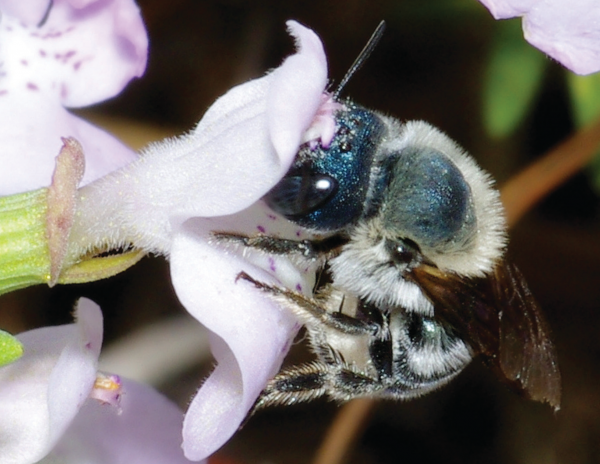
Blue calamintha bee. Photo by ZooKeys Journal
Nesting habits of the bee were also a subject of study. Researchers discovered that, contrary to expectations, the blue calamintha bee nests underground, utilizing the root systems of certain plants. This finding has implications for land management practices, particularly in areas where prescribed burns are used, as such activities could impact the bee’s nesting sites.
Conservation Challenges
The survival of the blue calamintha bee is closely tied to the preservation of its habitat and host plants. The Lake Wales Ridge is one of the nation’s fastest-disappearing ecosystems, facing threats from development, agriculture, and habitat fragmentation. Ashe’s calamint, the bee’s primary pollen source, is itself a threatened species, further complicating conservation efforts.
Florida’s State Wildlife Action Plan lists the blue calamintha bee as a species of greatest conservation need. Ongoing research aims to inform conservation strategies and assess whether the bee warrants protection under the Endangered Species Act.
How You Can Help
You can help protect the blue calamintha bee by supporting native plant restoration. Planting species like Ashe’s calamint provides essential food and habitat for this rare pollinator and others.
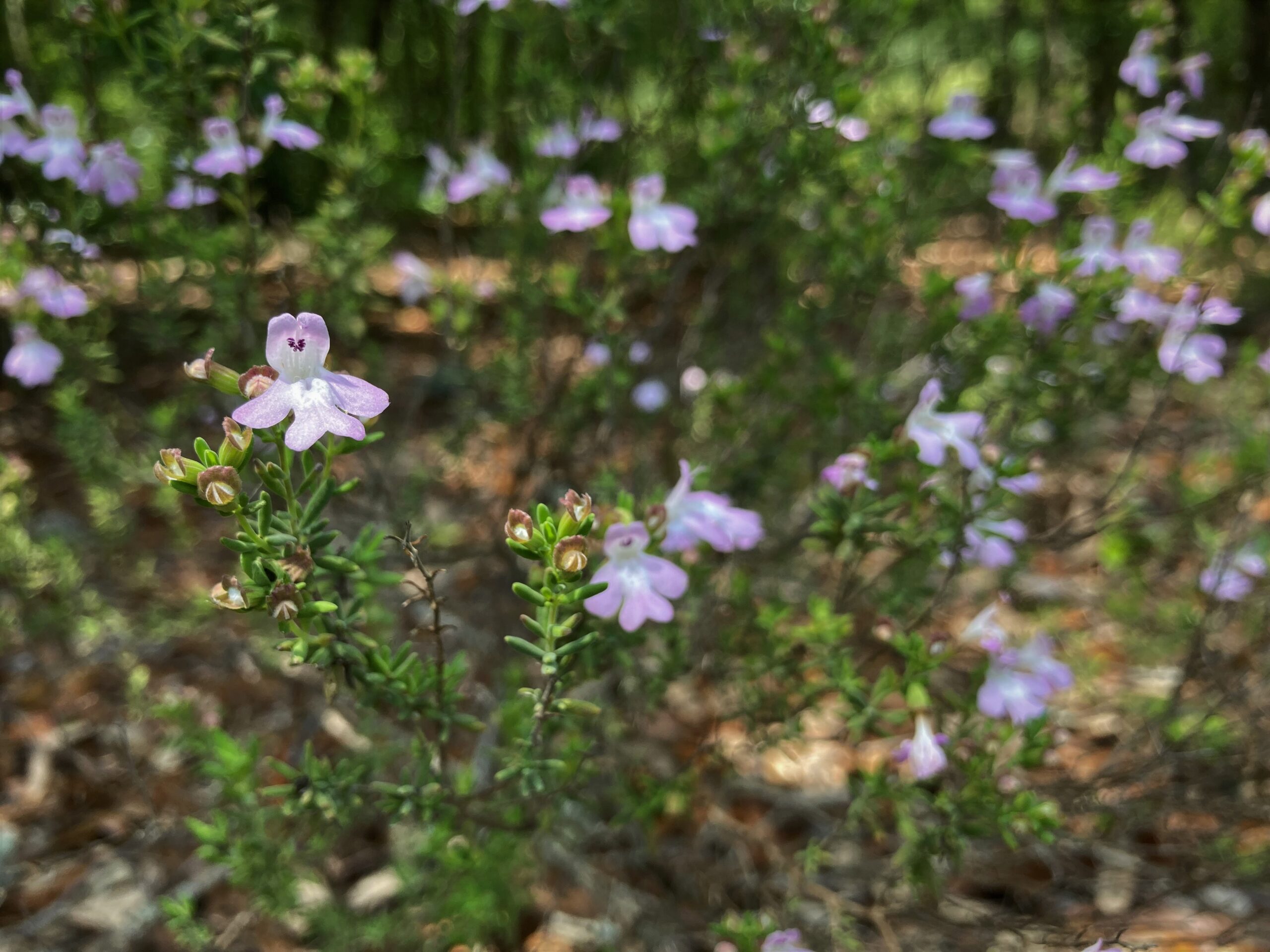
Ashe’s Calamint (Clinopodium ashei). Photo by USFWS
Ashe’s calamint, a state-threatened species in Florida, is a vital plant for the rare blue calamintha bee. While best suited for scrub or sandhill restoration projects and naturalistic landscapes, it can also be a valuable addition to dry wildflower gardens. If you plan to include Ashe’s calamint in your landscape, be sure to purchase it from a reputable native plant nursery to support conservation efforts.
Advocating for habitat protection through local conservation efforts is another vital step, as is spreading the word. By educating others about the bee’s unique role in Florida’s ecosystems, we can raise awareness and inspire action to preserve our state’s remarkable biodiversity!


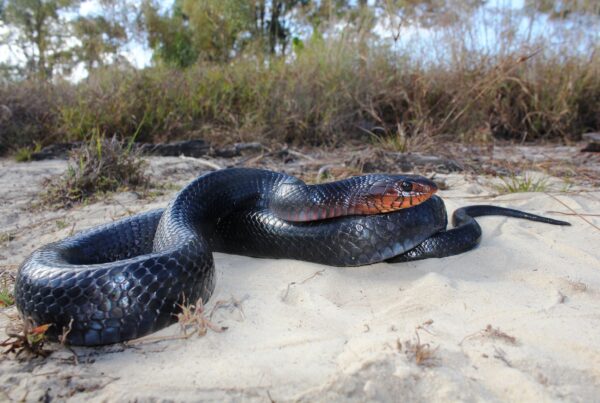
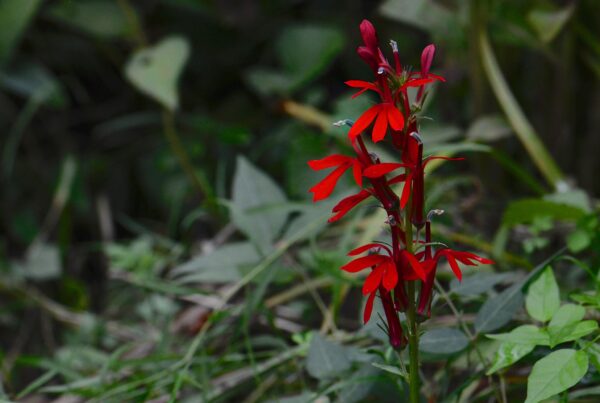
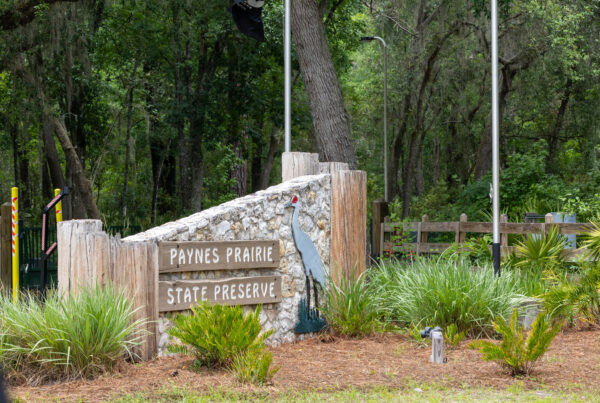

Great article. Please share more of this important info.
Very informative web site,
I’m very interested in breeding
Non-Venomous Snakes that keep neighborhood Safe & Free of
Poisonous Sbakes.